There have been several VR announcements over the past few months as the technology continues to gain momentum. CEO and Founder Patrick O’Luanaigh looks at the key emerging opportunities and how these will be shaped further as we approach GDC.
In January I wrote a blog around the key trends emerging from 2018 – the growth of Location-Based VR, new consumer hardware focused on ease and accessibility, and the importance of new long-form content – and predicted each would hit their stride in 2019.
Just over two months later and these predictions have already begun to ring true with new announcements, appearing on an almost weekly basis, including at events such as CES and Mobile World Congress. With GDC now just a few weeks away, and the rumour mill already beginning to crank up again, let’s revisit my trends and see where we are with them…
Game-changing investment in Location-Based VR
January saw Sandbox VR, a free-roam VR Location Based Entertainment (LBE) company raise a huge $68m Series A investment round, led by Andreesen Horowitz (who was also a major investor in Oculus). Marc Andreessen (the American entrepreneur, investor and co-founder of Netscape) is a big advocate of VR and said in January that, counter to popular Silicon Valley opinion, he believes VR will be “1000 times bigger” than AR.
Sandbox VR, along with Nomadic and Spaces, join other established companies such as The Void, Zero Latency and Dreamscape Immersive in driving more customers to these VR destination centres.
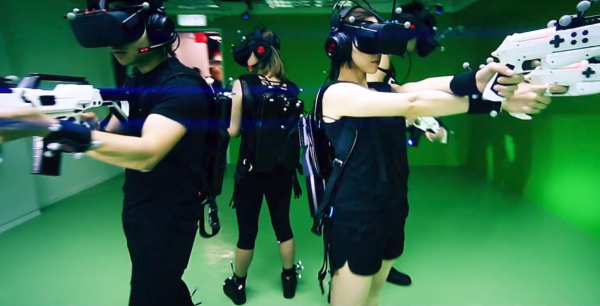
This investment in Sandbox VR reveals two very interesting points about the health of the overall VR market itself: Firstly, the opportunity for highly social, out-of-home, Location-Based VR entertainment continues to grow, and leading analyst’s expectation is that the revenue in this market will double in size over the next few years. Secondly, and most importantly, it is a key example that shows that investment in VR in general is growing in confidence once again after a slow 2018.
More accessible… and better… VR
Most of the new VR hardware announcements this year are focused on improving accessibility and ease of use, whilst also delivering the innovation essential for mass adoption in the long term, something that in fact kicked off last year with the announcement of the Oculus Quest.
At CES this year, HTC revealed the Vive Cosmos headset, which offers inside-out tracking. Compared to the existing Vive’s requirements of external lighthouse trackers and cables, this a much simpler solution and delivers increased ease of use to the player, a key part of driving adoption.
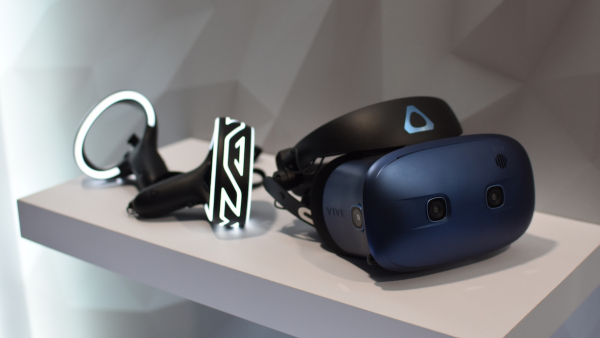
But it’s not just about driving accessibility in the here and now. New innovations will deliver high spec tech which will one day drive mass adoption. The Vive Pro Eye, offering eye tracking, and the HTC’s 5G Hub promising streaming direct to the headset, are two innovations that I have previously hypothesised will be integral to future VR adoption.
Similarly, the next generation of AR (led by the recently announced HoloLens 2) may not be the most obvious innovation needed for mass VR adoption. However, given the consolidation of both technologies is largely expected, the interdependence of the success of each is clear. With new innovations such as automatic IPD, eye tracking and improved gesture control, things are looking very exciting indeed.
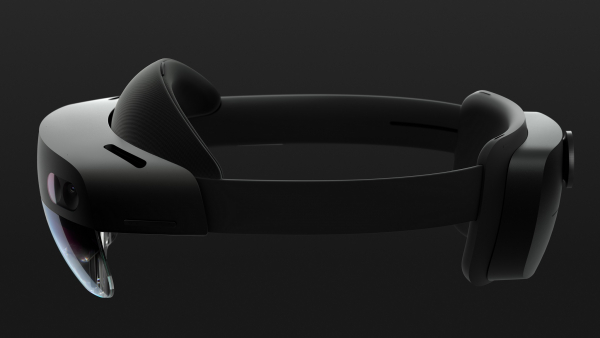
Couple that with persistent rumours about a new headset from Valve, the rumoured Oculus Rift S – and price reductions on current headsets, including the price cut of the Rift to $349 – and it all continues to drive progression in this space in tangible ways.
The Next Phase in VR Content
As with any interactive platform, its been widely documented that VR’s success will be down to great content as much as the hardware. Following several critically acclaimed titles last year, including Beat Saber and Astro Bot, new major announcements have already landed this year. Asgard’s Wrath joins a host of other announced titles expected to release this year, including Stormland, Defector, Blood and Truth and Echo Arena 2. We’re excited to see what Respawn have been up to in this space too!
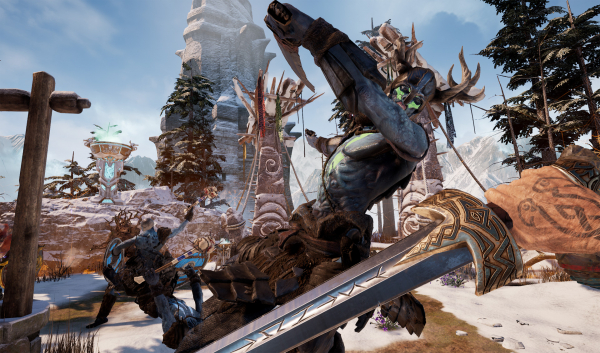
Furthermore, Location-Based VR content continues to grow ever more focused and bespoke for this market – and not just at physical spaces like The Void. More titles are being designed specifically for arcades to ensure better experiences for the players. Including our own recently released Shooty Fruity Arcade (which saw us take the home version and redesign it for arcades), other titles such as Space Junkies, Raw Data Arcade and Arizona Sunshine now offer updates to make their games more compelling in this emerging part of the market.
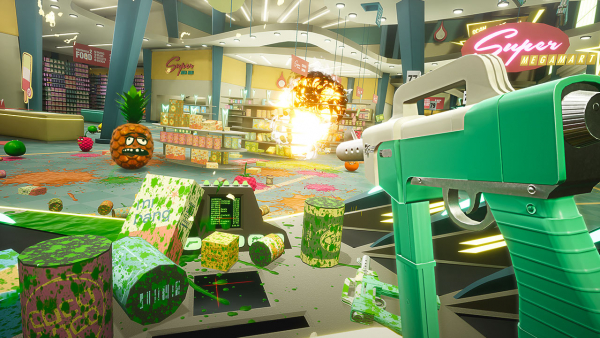
The Proof Is in the Numbers…
Finally, the install bases of VR headsets are continuing to grow respectfully creating a solid foundation for the later, more widely appealing hardware to build upon. Steam-supported VR headset numbers are growing steadily over time, whilst we believe that Sony’s PSVR headset will have exceeded the 4 million milestone by now.
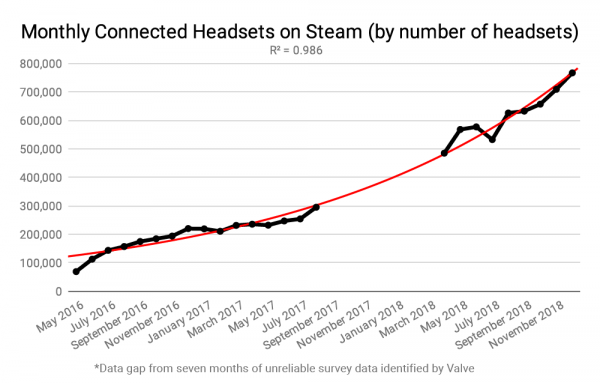
Source: Road To VR
In short, there is so much to look forward to in the near future. The first two months of 2019 has been quite spectacular, and the rest of the year looks set to push the accelerator down ever further, as we continue our journey towards the VR “hockey stick”.
Patrick O’Luanaigh is the CEO here at nDreams. He has over 20 years in the video games industry, holding senior positions at Codemasters, SCi, and more recently as Creative Director at Eidos where he was responsible for titles including Tomb Raider Legend, Hitman Blood Money, Just Cause and Conflict: Desert Storm. He left to found nDreams in late 2006.